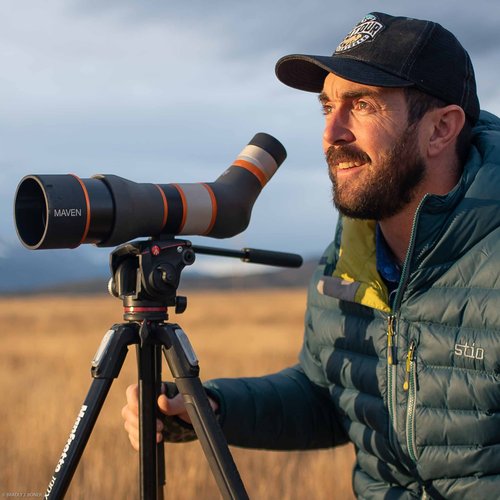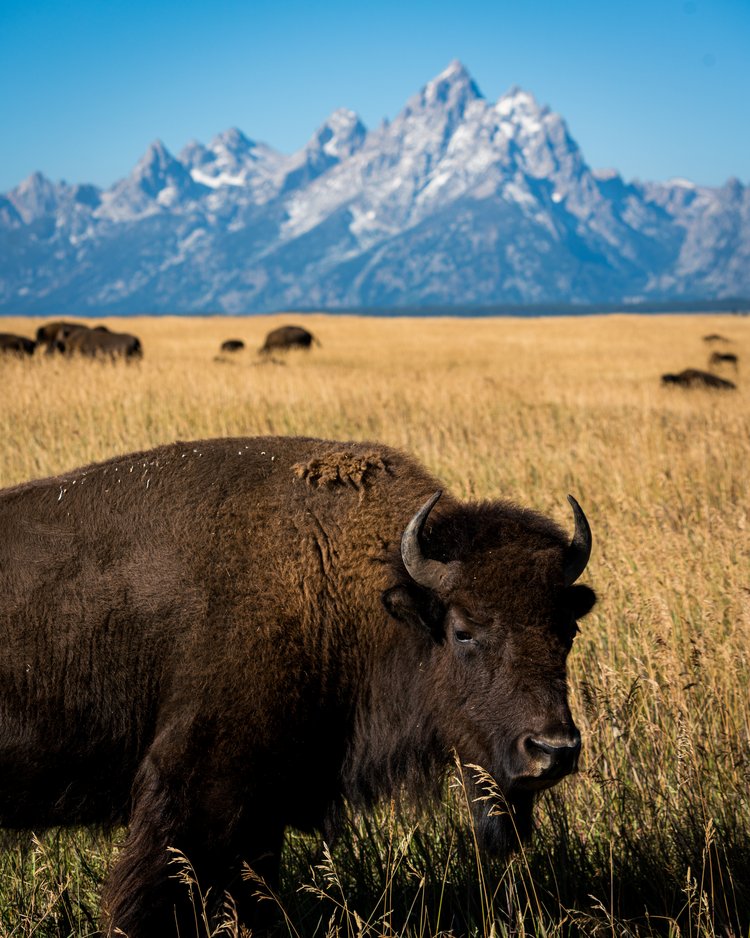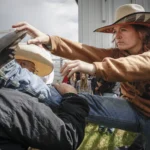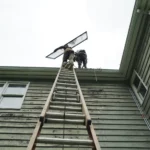Wyoming Wonders: How One Tour Operator is Advocating for Wildlife
- Published In: Other News & Features
- Last Updated: Aug 18, 2022

By Amber Gibson
Special to the Wyoming Truth
My first visit to Wyoming eight years ago was during elk mating season. On a brisk early October day, I ventured to Yellowstone National Park with a naturalist guide, who explained the fierce mating ritual I was witnessing en masse. The high-pitched shriek of bugling bulls was entirely unexpected, and in just one day, I saw multiple battles as bulls violently crashed antlers to prove their power to females.
It was an iconic Wyoming scene—and a precious natural wonder. Wildlife, for good reason, is one of the state’s primary tourist attractions. From herds of roaming bison and migrating pronghorn deer, to soaring bald eagles and elusive mountain lions, Wyoming is home to over 100 mammal species and several hundred species of birds. Small wonder, then, that 43% of respondents to a 2018 Wyoming Overnight Visitor Profile Study said wildlife watching was one of their top activities.

Enter Taylor Phillips. Since 2008, Phillips has led guided wildlife and photography expeditions in Grand Teton and Yellowstone National Parks through EcoTour Adventures. By connecting guests to the natural world and educating them about conservation, Phillips’ operation offers more meaningful experiences than a standard sightseeing tour.
“In 2020, Phillips created Wildlife Tourism For Tomorrow, a signature initiative of The WYldlife Fund, to help protect and preserve Wyoming’s wildlife for future generations. He saw a disconnect between the individuals who fund wildlife conservation (hunters and anglers) and the people who benefit (tourists and Wyoming’s $4 billion tourism industry).”
“Wildlife is a top driver of tourism for our state, but the tourism sector as a whole contributes very little to the conservation and well-being of the state’s wildlife,” said Phillips, 42. “I wanted to create a model to engage the tourism sector to pay their fair share, so it’s not just hunters and anglers funding wildlife conservation. If we can tap the tourism industry financially to put money on the ground for wildlife, everyone will benefit.”

One of Phillips’ most memorable experiences was watching a grizzly bear in the Hayden Valley take down a newborn elk calf.
“I had two couples on this tour, and we were observing a grizzly bear when it started to move quite quickly across the landscape, crossing the Yellowstone River and moving across the road right in front of us,” he recalled. “I recognized this as a hunting strategy that bears use – covering ground at a quick rate to startle newborn elk calves that are bedded in the tall grasses. That’s just what it did, and we saw it take this calf for a meal. What was really thought-provoking was the different reactions the two couples had. One couple thought it was incredible to watch, while the other couple had a more horrific view of it. It was a great learning and teaching opportunity. This is nature at work, and at times, it is bloody and can be perceived as sad.”
Phillips found his passion for the outdoors as a child growing up in Virginia. As an adult, he went on to hike the full length of the Appalachian Trail and paddle the full length of the Yukon River through Alaska to the Bering Strait.

In his college dorm room, Phillips displayed a photo of a mountain range and river meandering below its majestic peaks. It wasn’t until a friend came to visit and recognized the landscape that Phillips learned the photo was of the Teton Mountains.
“That was my first introduction to Wyoming,” said Phillips, who majored in environmental studies and environmental philosophy at Eckerd College in St. Petersburg, Florida. “I figured it was worth checking out. So I came out for a summer season and got hooked.”
Early on, EcoTour Adventures was a one-man show, but over the past 14 years, Phillips built a team of 30 employees, with 25 of them in the field. Together, they have led over 100,000 guests on tours.
“We started during the recession and endured the pandemic a couple of years ago, along with flooding in Yellowstone, fires with road closures and government shutdowns where parks were shut down overnight and we had to cancel tours,” he said. “There have been lots of challenges along the way, but so many successes, too.”
Now, Phillips spends 80% of his time with Wildlife Tourism for Tomorrow, identifying projects to support and developing relationships with potential business donors.
Individual initiatives, such as the South Flat Creek Channel Restoration, Jackson Elk Project and U.S. Highway 26 Wildlife Crossings, are outlined on the group’s website, including the project goal and estimated budget. For example, constructing new underpasses and overpasses for wildlife crossings will mitigate wildlife vehicle collisions, which account for most vehicle crashes in the area. Through Wildlife Tourism for Tomorrow, donor partners like The Bank of Jackson Hole, The Wort Hotel and Engel & Volkers can donate to The WYldlife Fund or select the project that they feel most passionate about. One-hundred percent of donated funds will be allocated for the specific project.
“In a state like Wyoming, where we don’t like laws, regulations and new taxes, to tackle this from a grassroots level is the way to do it,” Phillips said.
In 2021, Wildlife Tourism for Tomorrow and The WYldlife Fund raised over $400,000 to support wildlife habitat, research and education projects. The group has already surpassed that mark this year.
Said Phillips: “We’re gaining traction, and the future is bright for Wyoming wildlife.”













